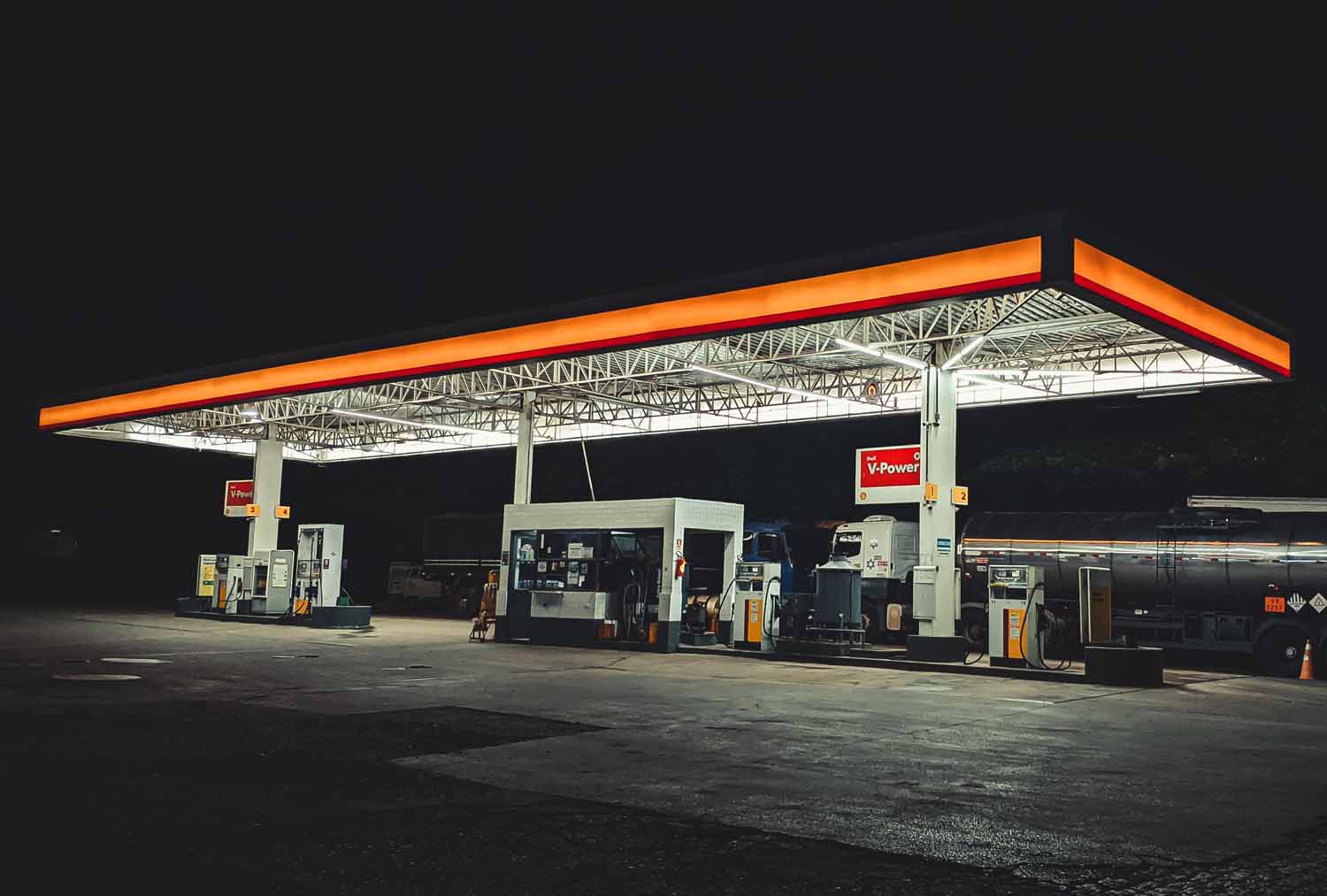How to Be More Fuel Efficient And Increase Your Gas Mileage
6 min read

As a delivery service, one of your largest expenses is likely fuel—so lowering the amount of fuel you need directly lowers your costs—and that’s good for any business. One method of lowering your fuel usage is through eco-driving or driving with the goal of increasing your miles per gallon, which can increase your fleet’s gas mileage by up to 15%. As a bonus, this helps with eco-friendly shipping and delivery, which is growing in importance with each passing year.
That said, finding ways to increase gas mileage isn’t enough to see big business savings—lower the overall miles driven by your fleet to increase savings exponentially. That’s why the key to driving down fuel costs is to use more efficient driving routes. OptimoRoute automatically optimizes routes to maximize efficiency, driving significant savings on fuel.
Jump to the section that interests you most:
- 6 Driving Techniques to Reduce Fuel Costs
- Why Route Efficiency Is the Real Driver of Fuel Costs
- Optimize Routes, Reduce Driving Time, and Save Big on Fuel With OptimoRoute
- FAQ About How to Be More Fuel-Efficient When Driving
6 Tips ForReduced Fuel Costs And Better Gas Mileage

These six driving techniques will help you with your fuel management—lowering the fuel consumption and providing you with better fuel economy.
1. Don’t speed up or slow down too fast
According to AAA Gas Prices, starting and stopping too fast increases fuel consumption and wastes gas. These “jackrabbit starts” usually don’t even get you past the next red light faster.
Think about the last time you weren’t in a hurry at a stoplight. Was there someone who hit the accelerator right when the light turned green? There’s a high chance that you caught up to them at the next red light (and saved gas while doing it). Though it won’t help you avoid the many red lights you may encounter, the gas-saving solution for delivery drivers is to start slowing down ahead of time and ease on the gas to save fuel.
2. Make sure you have adequate tire pressure
Twenty-one percent of UK drivers keep their tires at the right pressure to lower car running costs, according to Statista. This eco-driving habit might be easy for fleets with new vehicles, which usually have tire pressure sensors. It’s important, if you have these, to make sure they are working and clean.
If not, check each truck’s tire pressure after drastic weather changes to ensure they are at the right pressure. This is especially important during winter or cold snaps as cold weather can lower tire pressure significantly. It’s also worth checking the tire pressure at each scheduled maintenance to catch issues ahead of time rather than after you’re stuck on the side of the road with a flat tire.
3. Reduce extra weight
According to the Department of Energy, 100 extra pounds will increase gas costs by $0.03 per gallon, while AAA Automotive notes that 100 extra pounds will reduce your MPG by up to 1 percent—which wastes fuel with each mile driven. The reason for this is that the heavier the vehicle or the towing load, the bigger rolling resistance it has, which means your engine has to work harder to move the vehicle. So, while removing things from a delivery truck might not be as easy as it sounds, there are likely a few options.
One option is removing extra seating if you have two or three seats, but the driver works alone. Other examples include removing roof racks that aren’t being used, turning off air conditioners in cold climates, or taking out packages that won’t be delivered that day.
4. Check traffic before you leave
Traffic causes you to idle your car, which uses gas. According to AAA Automotive, your car could burn one-quarter to one-half gallon of fuel per hour of idling. While this doesn’t sound like much, Texas A&M reports that in 2019 (we didn’t use 2020 data due to the effect COVID had on driving), drivers faced 8.7 billion hours of delays, resulting in 3.5 billion gallons of wasted fuel.
The easiest way to save money and fuel is to avoid traffic as much as possible. Think about changing your route to hit minimal traffic and avoid highway driving during rush hour, or schedule driver breaks during high-traffic times, so you aren’t on the road at all during those hours.
5. Maintain distance while in traffic
Following too closely is often illegal and a bad (fuel using) habit of many aggressive drivers. This is because, in part, when you follow too closely, you rapidly brake, speed, and accelerate—all of which lower fuel efficiency and increase fuel costs.
Use less fuel and lower gas mileage by 10 to 40% depending on where you’re driving by avoiding aggressive driving habits. That means you should maintain at least two seconds of driving time behind the car in front of you, follow the speed limit, stay in the same lane as much as possible, use cruise control, avoid passing, and following all right-of-way rules.
6. Perform regular services
Routine services can help identify and fix small problems with a vehicle before they become bigger, more expensive problems. This is especially important for fleets, as neglected issues can not only affect fuel economy but lead to truck downtime and lost money.
At a minimum, most services should include an oil change, tire rotation, brake inspection, spark plugs inspection, and air filter replacement. The dirty air filter can block the normal airflow to the engine and negatively impact fuel economy. Same with motor oil – if it’s too thick, it will increase the engine’s workload and consume more fuel. And if you don’t know when you should perform these routine services, you can always look at the owner’s manual, ask your mechanic, or take it to the dealership for the first service if you bought a new car.
Why Route Efficiency Is the Real Driver of Fuel Costs
Increasing gas mileage through safe and fuel-efficient driving is one way to lower fuel costs. However, if you want lower fuel costs, lower the mileage your fleet is driving overall. Incorporate these mileage-lowering tips into your route planning.
- Create short trips for all drivers. Increase delivery speed by shortening the distance driven between stops through route optimization.
- Cluster your fleets to specific areas. Use a tool like geofencing in OptimoRoute to lower your fuel costs by keeping drivers in one area rather than driving across town for one package.
- Reduce failed deliveries. Decrease the need for redelivery with Realtime Order Tracking, so your customers know how far away you are and when to be ready.
- Optimize multiple stops based on mileage. Combine pick-up and delivery into the same route so your vehicles don’t have to visit the same location twice.
Think about using automatic routing and scheduling software to optimize your routes and save you gas faster and more effectively than manual route planning.
Optimize Routes, Reduce Driving Time, and Save Big on Fuel With OptimoRoute
Lowering fuel use will lower the cost of operation and increase revenue—especially as fuel prices climb. One method is to adopt better driving habits that lower fuel costs. However, if you don’t prioritize lowering the miles you drive, you’re still likely spending too much money on fuel. Route optimization via OptimoRoute is ideal for businesses looking to lower their miles driven and decrease their costs.
- Factor in driver constraints. Limit working hours, overtime, or miles driven per worker or truck to keep your drivers in mind during scheduling.
- Impose order restrictions. Include service time windows, date range constraints, and location-associated wait times to factor in customer imposed restrictions.
- Use real-time replanning. Automatically reoptimize all routes using real-time information when important details change at the last minute.
Get started lowering your fuel costs today with a 30-day free trial.
FAQ About How to Be More Fuel-Efficient When Driving
What is the most fuel-efficient speed to drive at?
According to AAA Automotive, highway speeds, around 50 mph, achieve the best fuel economy for most cars, and higher speeds see lower MPG numbers. If you slow down by five to 10 miles per hour, you can increase your MPG by seven to 14 percent.
Does driving slower save fuel?
According to the Department of Energy, 50 miles per hour is the ideal speed. For every five miles per hour above that, you pay $0.22 more per gallon of gas. And, while you think speeding might get you to your next stop faster, it only saves you anywhere from 25 to 90 seconds total, depending on the distance traveled.
Does riding the clutch save fuel?
Experts are undecided; however, it is known that riding the clutch in a manual transmission can damage your car. This damage would very likely cost more than any potential savings in fuel. Rather, try coasting downhill or maintaining a constant speed when possible.
Which gear is the most fuel-efficient?
Generally, the highest-numbered gear you can use is the most fuel-efficient. However, this is only the case when you are maintaining your speed. If you are speeding up, practice good manual driving skills by using the lower gear until you can safely change to a higher gear.
Try OptimoRoute™ for Free
No installation or credit card required


